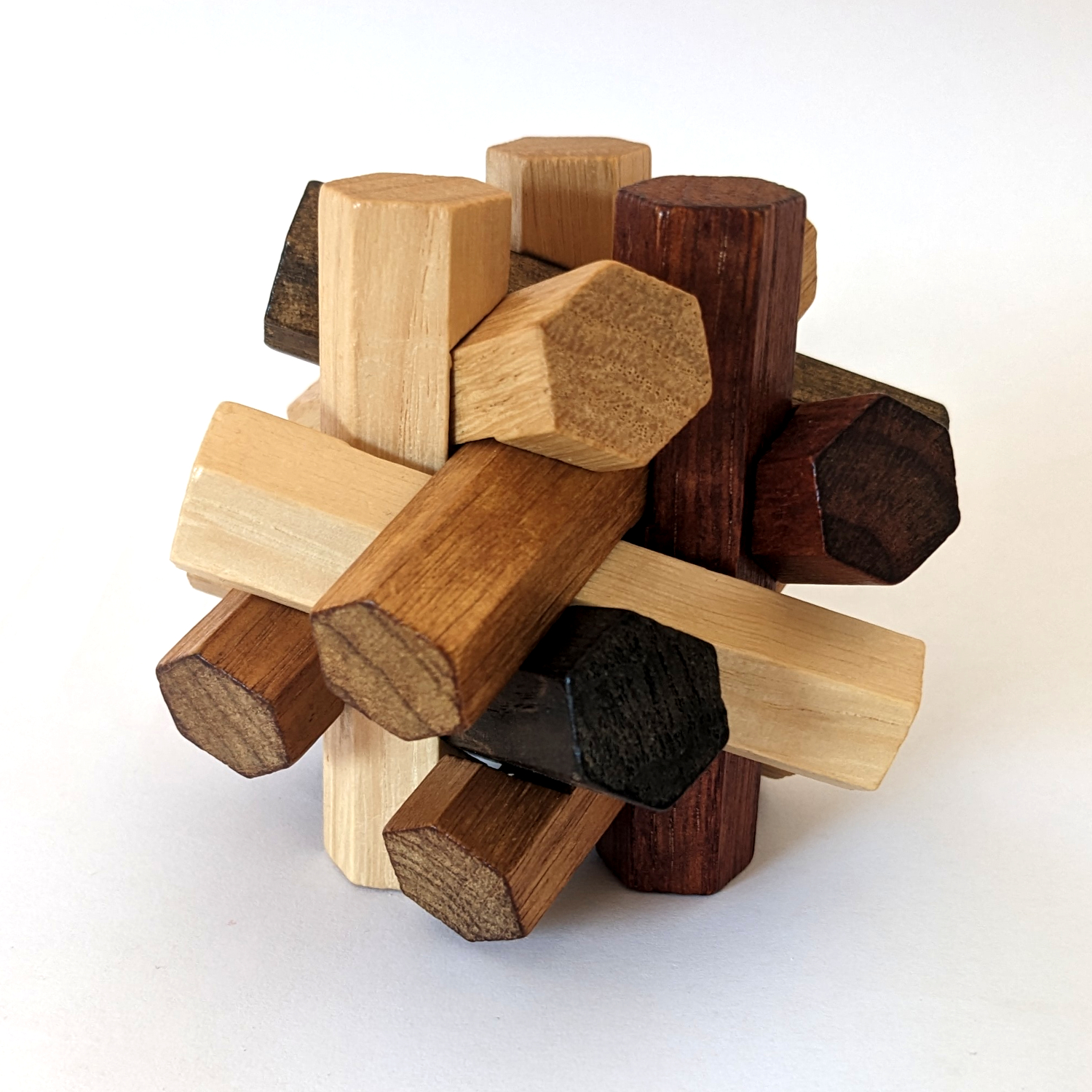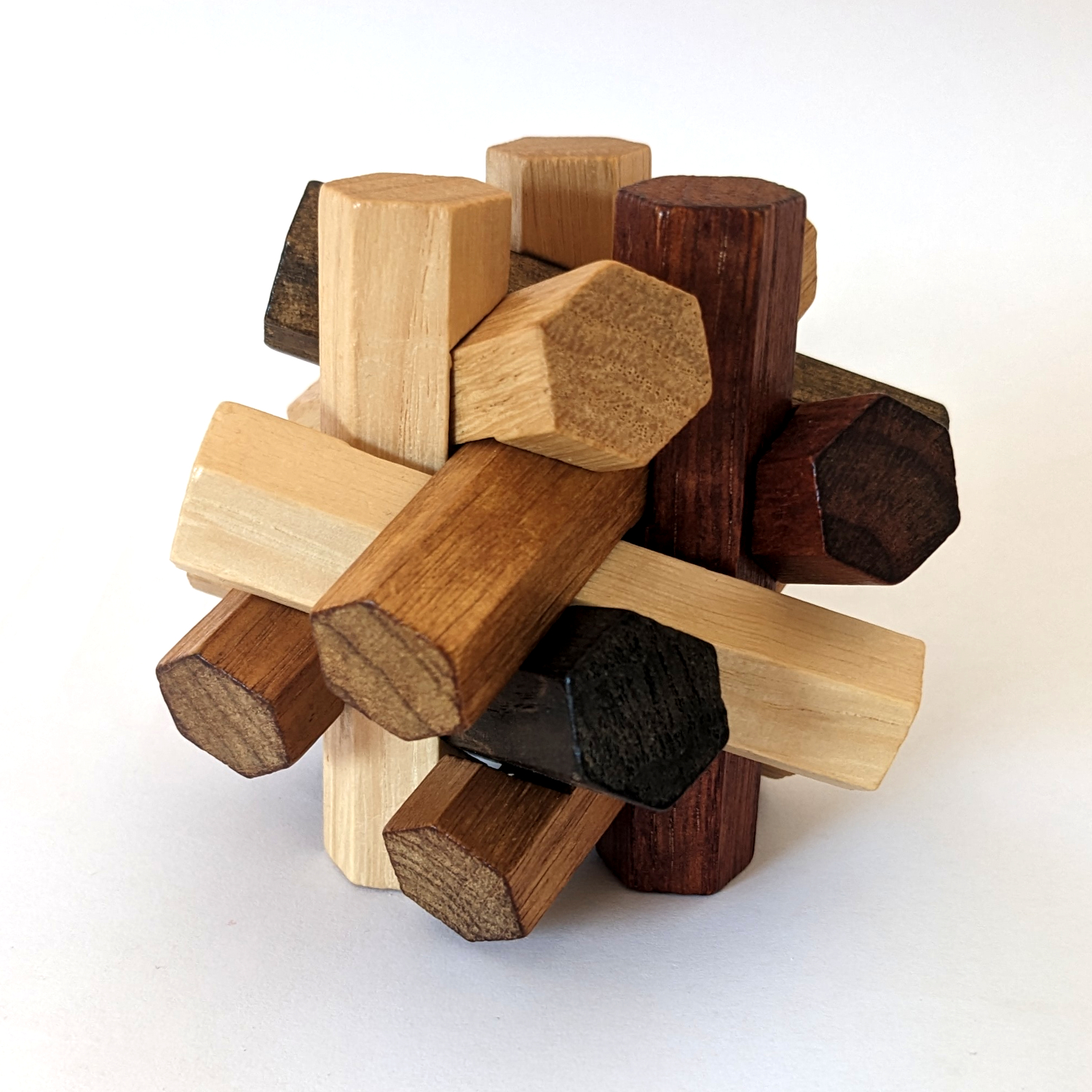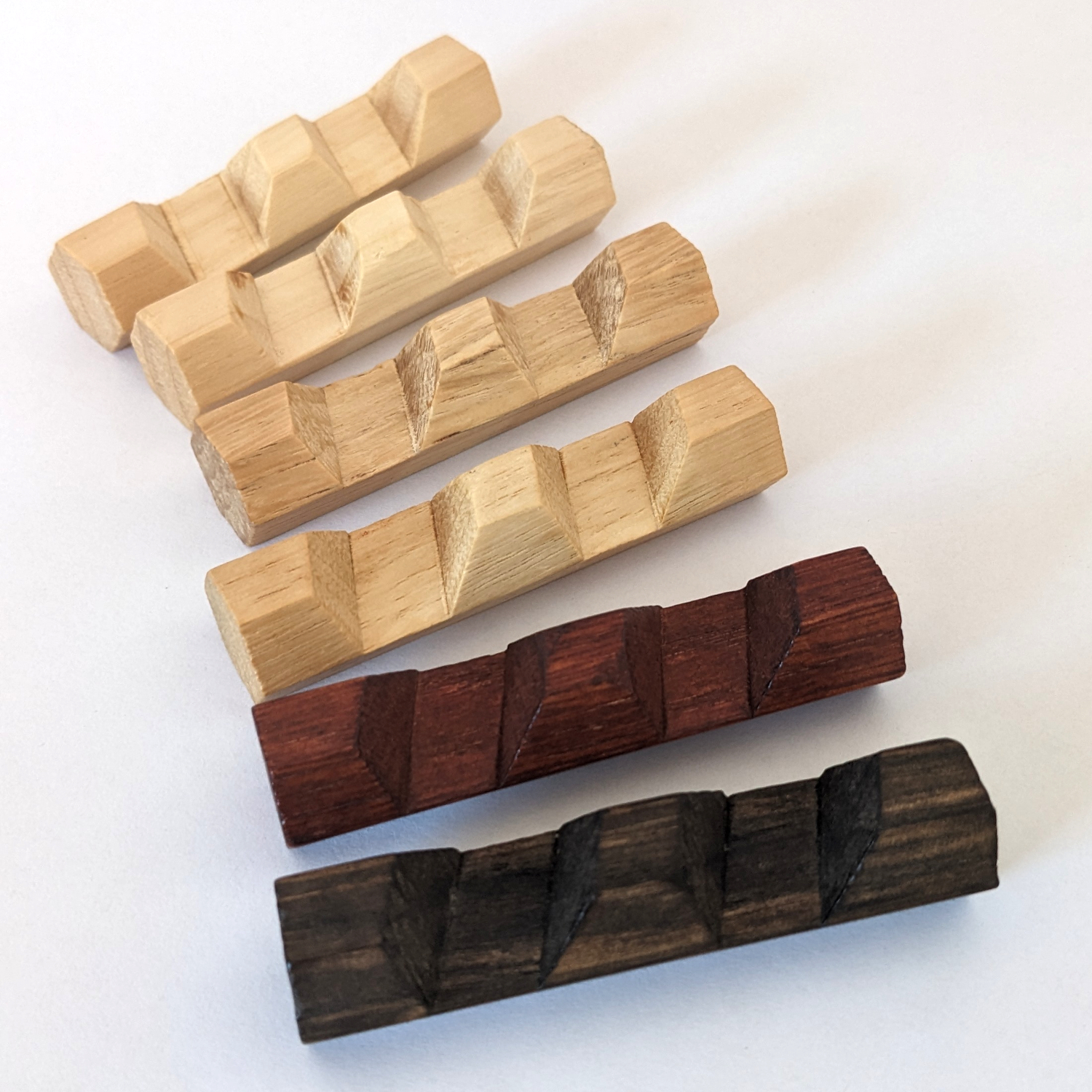Description
The Notched Hexagonal Sticks puzzle was born from the idea of transforming a classic geometric cluster of 12 triangular sticks into a system of interlocking hexagonal pieces. Each piece has two trapezoidal notches that allow it to fit precisely with the others according to a specific pattern. Theoretically, twelve identical pieces can form an extremely elegant and symmetrical structure. However, the puzzle is actually impossible to assemble if all the pieces are identical.
The solution to this paradox lies in introducing a third notch in three of the twelve pieces. These three “special” pieces make the assembly possible and lead to three distinct puzzle solutions, depending on how they are arranged:
- First solution: the simplest and most intuitive one, in which the three triple-notched pieces are inserted last to form a triangle.
- Second solution: requires the three “special” pieces to be mutually parallel, with a key piece sliding in last to complete the interlock.
- Third solution: the most challenging one, offering an intriguing problem for puzzle enthusiasts.
To add visual variety and beauty, the puzzle can be made using four colors, three pieces for each color. If the three triple-notched pieces share the same color, the first two solutions display interesting color symmetries. The second solution is particularly fascinating because all pieces of the same color are parallel to each other.
The idea behind the puzzle was patented by Stewart Coffin in 1973 (U.S. Patent 3,721,448) and was independently discovered by Bill Cutler.
Solution
Details
Name:
Purchase Year:
Creator
Source
References
- Stewart T. Coffin, The Puzzling World of Polyhedral Dissections, Oxford University Press, 1990.
- Collection of Puzzles, RBA Italia, 2007–2008.
- https://puzzleworld.org/PuzzlingWorld/chap13.htm






